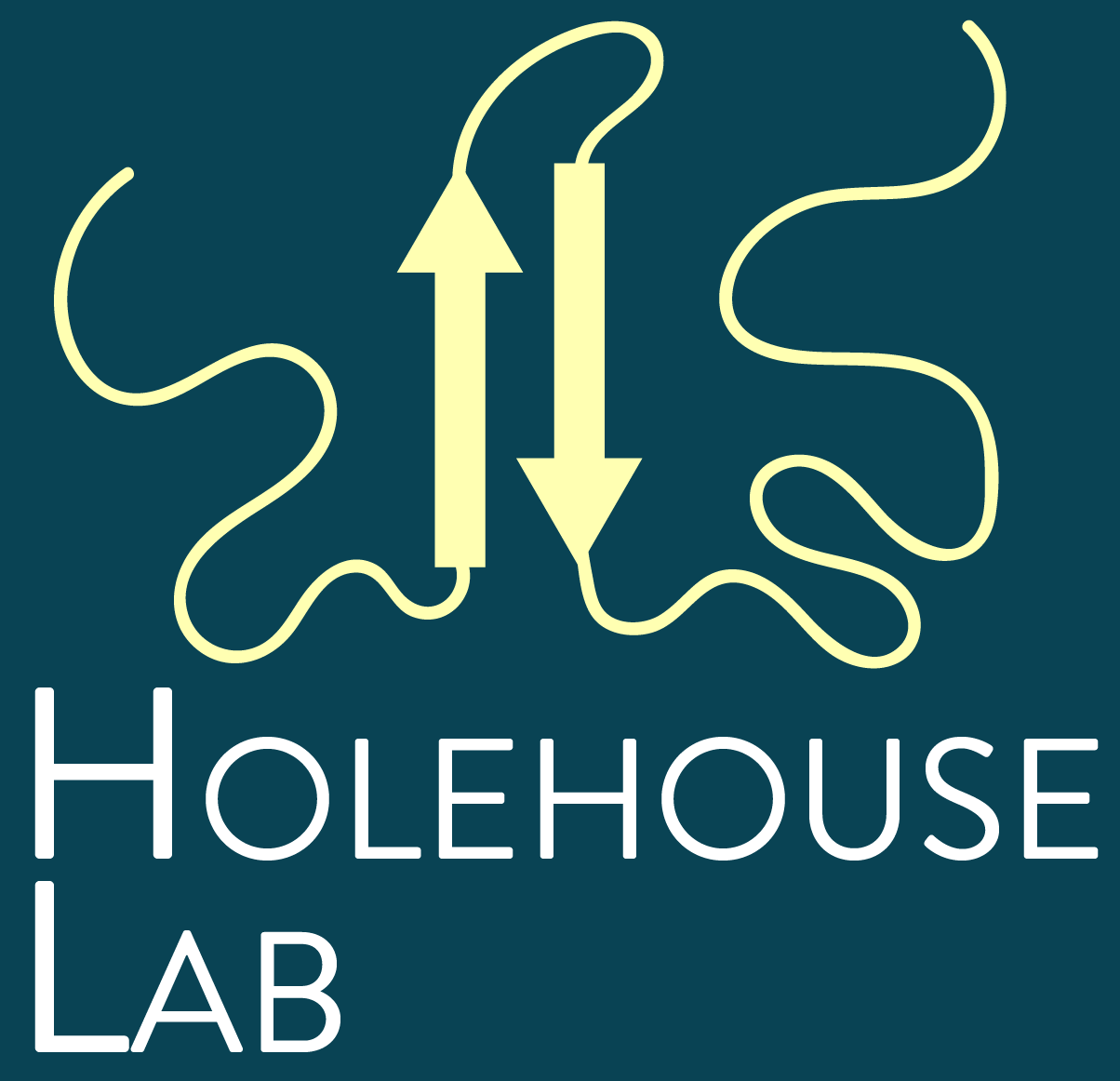Quantitative Assessments of the Distinct Contributions of Polypeptide Backbone Amides versus Side Chain Groups to Chain Expansion via Chemical Denaturation
Holehouse, A.S., Garai, K., Lyle, N., Vitalis, A., and Pappu, R.V. (2015). Quantitative Assessments of the Distinct Contributions of Polypeptide Backbone Amides versus Side Chain Groups to Chain Expansion via Chemical Denaturation J. Am. Chem. Soc. 137, 2984–2995.
Author: Ishan Taneja
Every introductory biochemistry class drills down on the idea that proteins become denatured in the presence of chemicals such as urea or guanidinium chloride (GdmCl). We tend to think of denaturation as a process that disrupts secondary and tertiary structure and consequently biological function. It’s natural to ask if we can be more quantitatively precise about this from a biophysical perspective.
Polymer physics theory very nicely provides a framework to ask this question (1,2). For some brief background, a polymer can exist in three conditions: a good solvent, ideal solvent, or poor solvent. In a good solvent, the chain is expanded because chain-solvent interactions are favorable while chain-chain interactions are repulsive. The global dimensions of a polymer are generally quantified by its radius of gyration, end-to-end distance, or hydrodynamic radii (3). Both these quantities scale according to N^{v} (N raised to the power of v) where N refers to the number of structural units and v is an exponent linked to the solvent conditions. In a good solvent v = 0.59 while in a poor solvent v = 0.33.
This is great, but what does this have to with proteins? Well, it’s been previously shown that highly denatured proteins in fact behave as polymers in good solvents. More specifically, their global dimensions scale according to N^{0.59}. This may come across as surprising, especially considering proteins are more complex than polymers. It’s natural to ask why aqueous solutions with high concentrations of denaturants should be good solvents for generic proteins in the first place? The prevailing notion is that urea denatures proteins through preferential interactions with backbone and sidechain atoms. Specifically, urea molecules accumulate preferentially around the carbonyl oxygen atoms of peptide group amides and to different degrees around the aliphatic, aromatic, and polar sites of sidechains.
Given all this, one may wonder what plays a greater role in denaturation of proteins: backbone or sidechain mediated interactions? To answer this question, the behavior of three polypeptides in an aqueous solution with and without denaturant were analyzed. Specifically the polypeptides GGGGGGGGGGGGGGG (referred to as G15), QFHFHWNRQDDQYFE (referred to as CAP), and GVSLLTIDVKKSLTK (referred to as OSP) were used as model systems. G15 serves as a pure polypeptide backbone (i.e no sidechain) while CAP and OSP contain sidechains with complementary attributes.
Results:
There are two sets of major observations from this paper.
The non sidechain containing sequence G15 adopts a preference for compact globular conformations in aqueous solutions with (Fig. 1C) and without high concentration (Fig. 1A) of denaturants. More specifically, even under high concentrations of denaturant G15 remains largely collapsed or “un-denatured” as considered in terms of polymer scaling behavior.
The sidechain containing sequences CAP and OSP adopt a preference for expanded conformations in aqueous solutions with (Fig. 1D) and without high concentration (Fig. 1B) of denaturants. The expansion is more pronounced in solutions with denaturants as opposed to water alone, where both CAP and OSP become highly expanded, analogous to real proteins.
Taken together, these two observations provide strong evidence that sidechain interactions facilitate expansion of polypeptide sequences. However, the fact that sidechains reduce backbone collapse in the absence of denaturants points towards the notion that side chain-denaturant interactions cannot be exclusively responsible for this behavior.
This idea was investigated further and the effective concentration of backbone amides across the three polypeptides of interest in aqueous solutions without denaturants was measured. This effective concentration can just be calculated as the number of amide groups within the volume the polypeptide chain occupies. A ~40% reduction in the effective concentration of amides for CAP and OSP compared to G15 was identified. A similar trend was observed when conducting the same experiments in aqueous solutions with denaturants. In effect, for G15 the lack of sidechains means that the backbone groups can pack closer together, allowing stronger amide-mediated intramolecular interactions.
Ultimately, our results suggest that side chain-solvent interactions induce a dilution in the effective concentration of polypeptide amides. This behavior is irrespective of denaturant concentration. This effect, coupled with the traditionally understood preferential interactions between side chain and denaturants, seems to be a plausible mechanism to explain the observations from Fig. 1. More generally, these observations and insights may serve as a useful framework for understanding the unfolded ensemble under folding conditions and denatured state ensemble under highly denatured conditions of generic proteins.
Further reading:
Ideas uncovered in this work are further integrated with the role of other sidechain chemical groups and subsequent work in a major review published in Annual Reviews in Biophysics (4).
References:
1. https://rsc.anu.edu.au/~sevick/groupwebpages/C3102-06/C3102-06wk1.pdf


